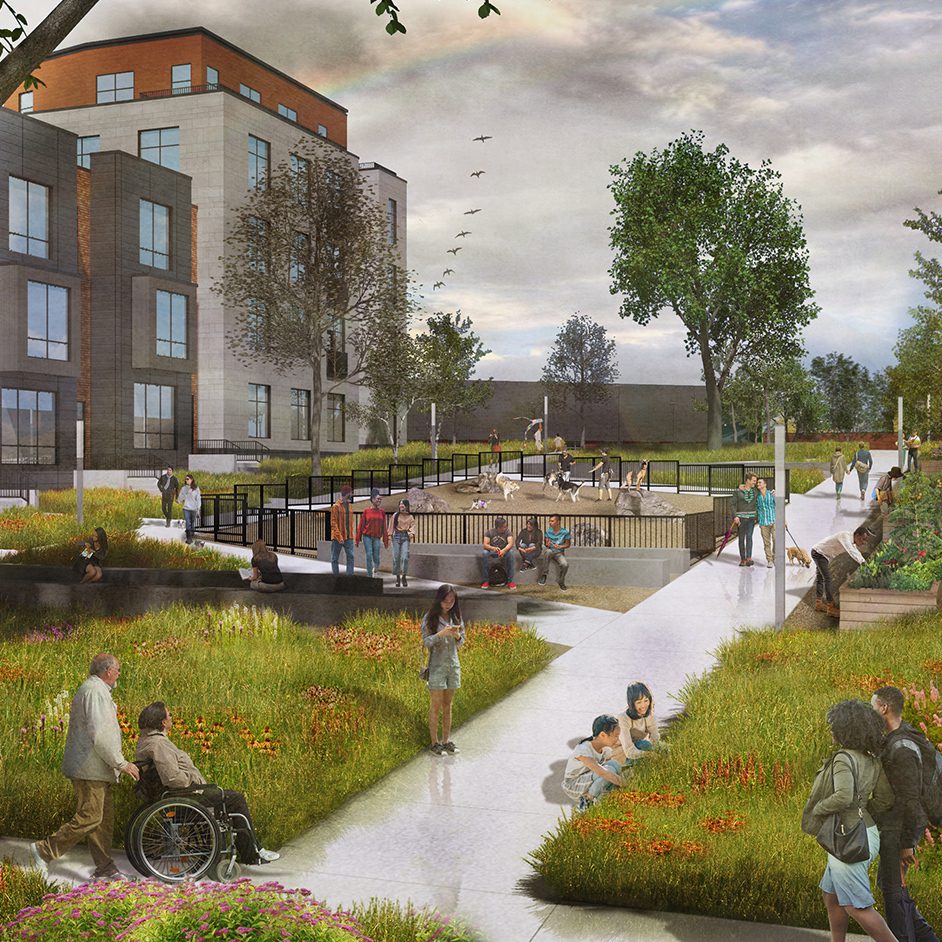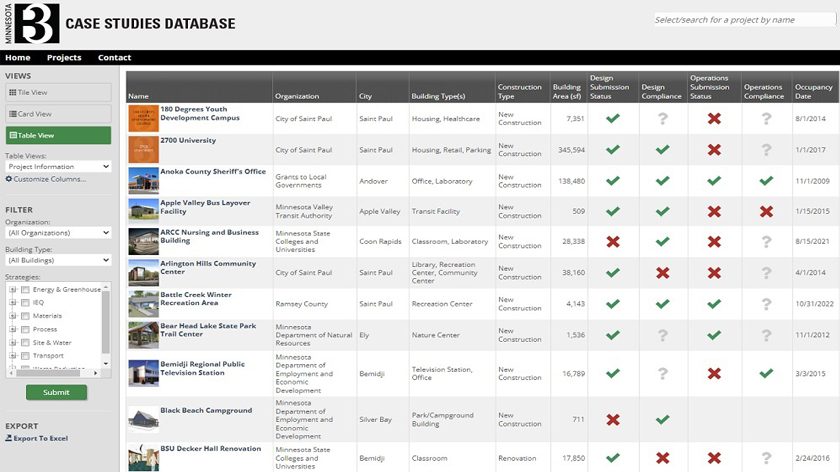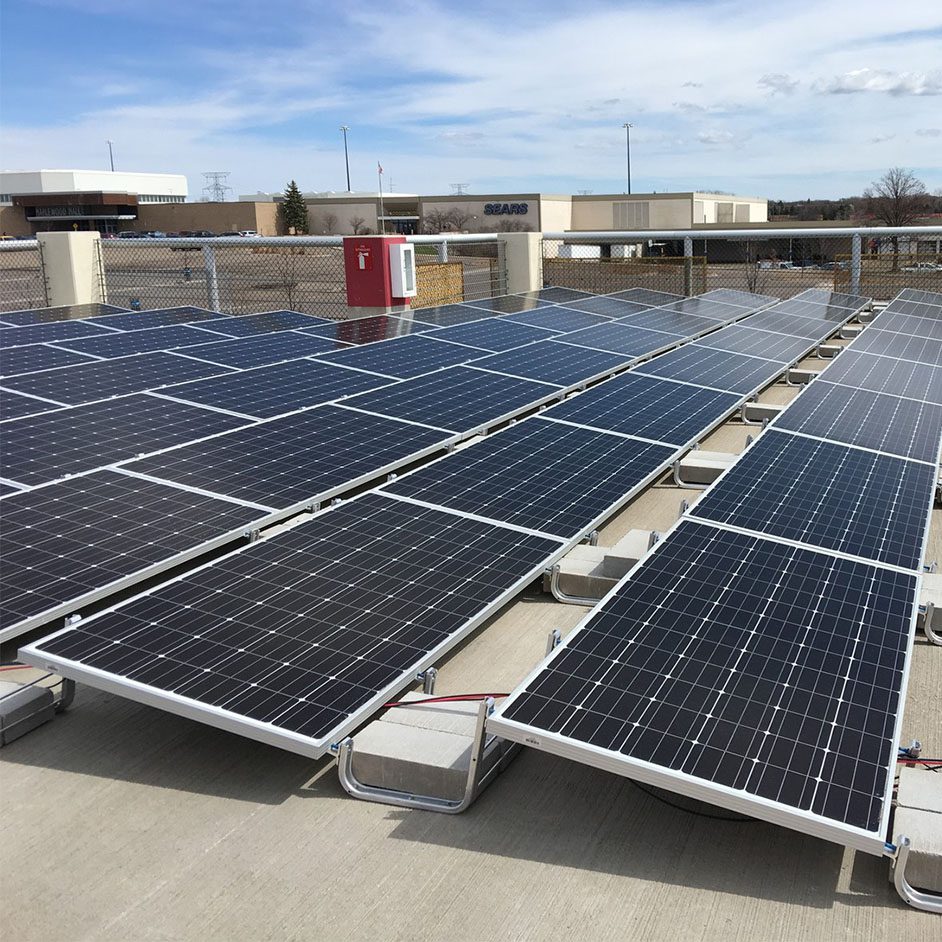
The LHB climate solutions studio leads projects that inform policies, guidelines, and programs to improve the built environment’s impact on natural resources, greenhouse gas emissions, and climate equity.
Why Climate Solutions?
In their Sixth Assessment Report: The Physical Science Basis, the Intergovernmental Panel on Climate Change reports that “the science [of climate change] is unequivocal, the changes are unprecedented, and there is no more time for delay.”[1] To address the growing impacts of climate change, adaptation and mitigation are crucial. Recognizing the urgent need for action including establishing science-based climate goals and policies, and the critical role of local entities in driving climate action, our team aims to serve Minnesota communities through meaningful and impactful climate solutions.
Interest in energy and carbon reduction has grown significantly among LHB’s clients in recent years. This client interest has allowed our firm to grow its climate solutions work into a dedicated studio that provides the data and tools for clients to set goals, predict outcomes, and track performance from building to state scale.
How Do We Take Action?
The climate solutions studio tackles a diverse portfolio of projects: informing policies, guidelines, and programs to improve the built environment’s impact on natural resources, greenhouse gas emissions, and climate equity. We work with a wide range of organizations who share our mission to prioritize meaningful and impactful climate solutions.
At the building scale, we’ve worked on several projects funded by the competitive MN Conservation Applied Research and Development (CARD) grant. Our most recent CARD project, completed in 2023, was a 5-year field study dedicated to exploring above-ceiling phase change material (PCM), an emerging passive thermal regulation technology. Through a key partnership with colleagues at Slipstream, we conducted research on the ability of PCMs to reduce building energy use and improve thermal comfort.
At the neighborhood scale, we are currently assisting two new developments in the Twin Cities to evaluate pathways to their carbon neutrality goals: The Heights in Saint Paul and Rice Creek Commons in Arden Hills. Through the climate solutions studio’s sustainability visioning and carbon planning leadership, these projects will be national leaders in demonstrating how to achieve net zero emissions.
At the community scale, we help local governments develop climate action plans. In early 2024, LHB in partnership with Local Climate Solutions supported the development of City of Minnetonka’s climate action and adaptation plan (CAAP), which prioritizes the city’s climate vision through strategic assessment and science-based goals. Our team is also working with the Shakopee Mdewakanton Sioux Community to achieve carbon neutrality by 2035, and fulfill community needs for the next seven generations.

At the state scale, LHB has co-managed Minnesota’s Buildings, Benchmarks, and Beyond (B3) program for over 20 years, promoting sustainability and resource conservation for state-funded buildings, managing the online B3 Case Studies Database, providing training and resources for project teams, leading client communications, and evolving the B3 Guidelines and SB 2030 program to meet ever-changing sustainability needs.

Potentially the most far-reaching project of the climate solutions studio is our creation and management of the state-wide Regional Indicators Initiative (RII), a program that provides over 70 cities in Minnesota with community-wide greenhouse gas data. The extensive data analyzed by LHB through RII allows for informed policy decisions among Minnesota communities, high-impact climate action, and progress tracking toward emissions reduction goals.
What’s Next?
In 2023, the State of Minnesota published the MN Climate Action Framework, which commits to achieving 100% clean electricity by 2040 and net-zero greenhouse gas emissions by 2050. This framework helps guide our state’s work on carbon-neutral, resilient, and equitable solutions. Our climate solutions studio is partnering with teams across LHB to support Minnesota’s goals through resilient infrastructure design, clean and renewable energy systems, and healthy and efficient buildings. Through urgent action rooted in research-based solutions, we aim to help our clients and communities respond to the needs of our changing world.
For more information on LHB’s work with climate action planning, visit our market page. ∎
[1] Intergovernmental Panel on Climate Change, 2021, Sixth Assessment Report: The Physical Science Basis (pg. V).



